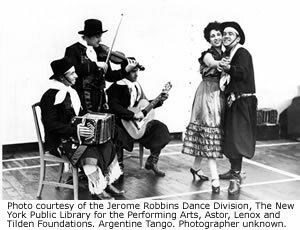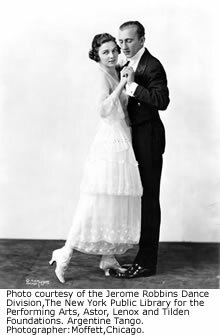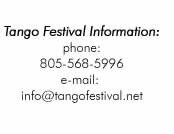
|
About the Festival
TANGO and MALAMBO:
A Festival Celebrating Art Music of Popular Inspiration
Santa Barbara, February 6-15, 2004
The Tango and Malambo Festival celebrates the greater culture of two 20th century Latin musical art forms. Latin American cultures have developed sophisticated sound traditions which constantly burst the lines between classical and pop. The music of Argentina, as exemplified by tango and folk dance has fruitfully permeated the classical scene.
The brain-child of Santa Barbara Symphony's Music Director, Gisèle Ben-Dor, in cooperation with the Santa Barbara Symphony and the City of Santa Barbara, the Festival will take place in the ten days leading up to the Santa Barbara Symphony's subscription concerts.
The Festival is a collaborative effort of the Santa Barbara Symphony, the State Street Ballet of Santa Barbara, the Santa Barbara International Film Festival, UCSB "Arts and Lectures" and Music department,Tango Santa Barbara, the Santa Barbara Public Library, Café Buenos Aires, El Paseo Nuevo and the Ben-Dor Music Discovery Project.
 Tango and Malambo follows the Revueltas Music Festival directed by Gisèle Ben-Dor in January, 2000 which brought national and international attention to the City and its Symphony, eliciting rave reviews. Tango and Malambo takes its title from the music and dance traditions of rural and urban Argentina. The personality of these dances, as they have evolved to mirror the country's immigrant and multi-cultural populations, have created an identity which has now become internationally acknowledged and embraced. The development of the Tango, for example, can be compared to that of Jazz at many levels.
Tango and Malambo follows the Revueltas Music Festival directed by Gisèle Ben-Dor in January, 2000 which brought national and international attention to the City and its Symphony, eliciting rave reviews. Tango and Malambo takes its title from the music and dance traditions of rural and urban Argentina. The personality of these dances, as they have evolved to mirror the country's immigrant and multi-cultural populations, have created an identity which has now become internationally acknowledged and embraced. The development of the Tango, for example, can be compared to that of Jazz at many levels.
It is the artistic goal of the Festival's director to present the inclusion of these popular styles in the established symphonic classical context, in concert performances and its other applications such as film and dance, to introduce music lovers to unknown masterworks of strong audience appeal, as well as provide wide popular exposure and opportunity to enjoy the music by all constituencies, as in a youth concert, the accessible "The Story of Tango" or free tango lessons in the mall.
The Tango has evolved from scarcely acknowledged African origins and a high society that thought of dance as obscene, through a world war in which both Argentina and Uruguay, where the Tango was born, became isolated. It finally took root in a culture created by European immigrants-in the bars and slums of Buenos Aires-to be exported to Paris after World War I to gain international respectability. "Music that enters through the ears and is transmitted through the heart to the feet" is the description provided by the master of tango nuevo and featured composer Astor Piazzolla.
 The Malambo, on the other hand, is the rural gaucho dance formed in the early 17th century in the Pampas grasslands-a tournament of gaucho skills danced solely by men. Evolved into the twentieth century, it is the nationalist tradition of the Argentine gauchesco culture. Its American counterpart can be said to be the Hoedown, with cowboys and rodeos mirroring the gaucho world closely.
The Malambo, on the other hand, is the rural gaucho dance formed in the early 17th century in the Pampas grasslands-a tournament of gaucho skills danced solely by men. Evolved into the twentieth century, it is the nationalist tradition of the Argentine gauchesco culture. Its American counterpart can be said to be the Hoedown, with cowboys and rodeos mirroring the gaucho world closely.
The composers celebrated include Astor Piazzolla, the brilliant, iconoclastic tango musician and composer, who has become a national hero in Argentina and a cult figure for classical and jazz lovers worldwide, but only after a lifetime of controversy and struggle. His Tango Nuevo was the last of the style's great trendsetter, who died in 1992 at the age of 71.
Works inspired by folk dance of his great countryman and teacher Alberto Ginastera, the dean of Argentine composers, and contemporary master Luis Bacalov, also an Argentine and an Oscar winning composer ("Il Postino"), are also featured.
